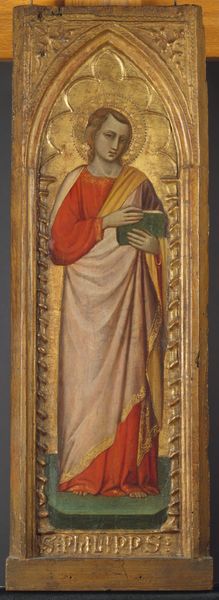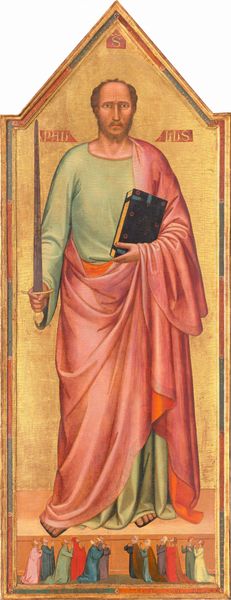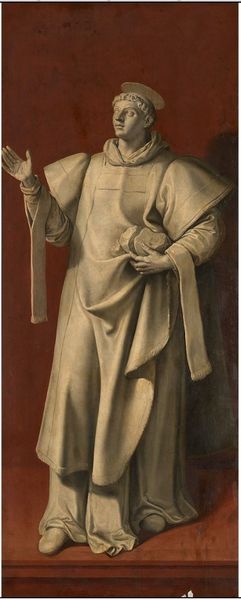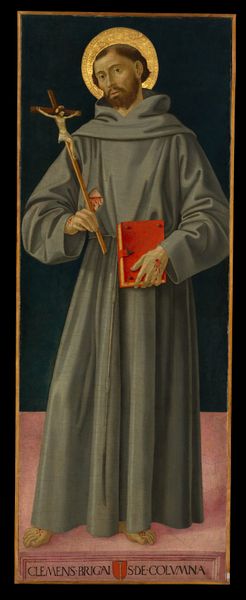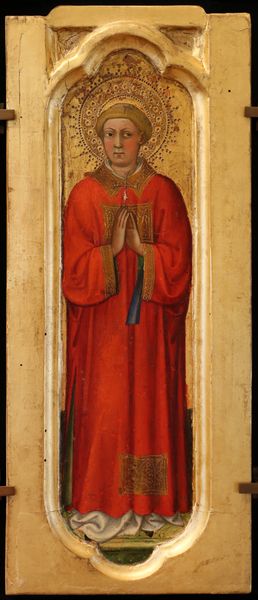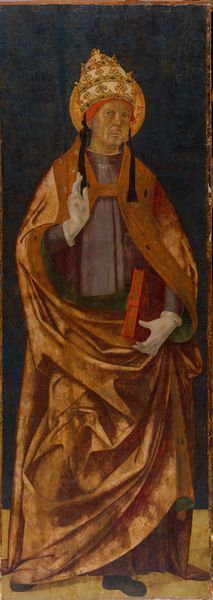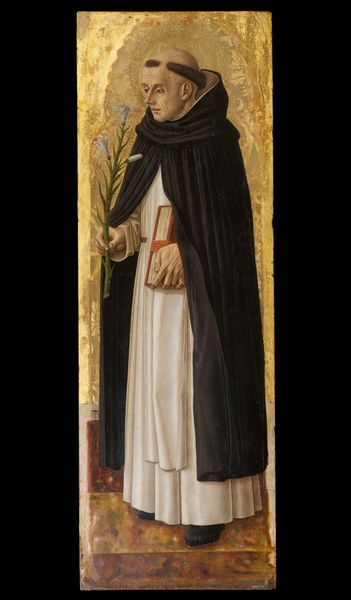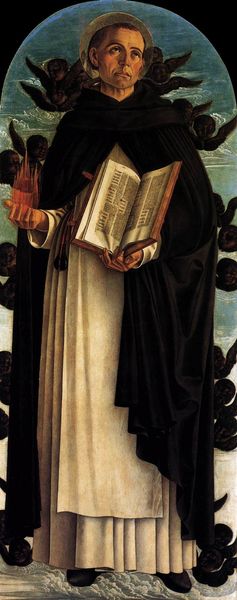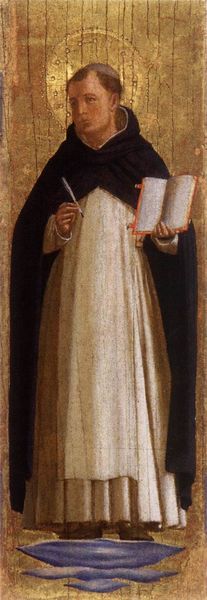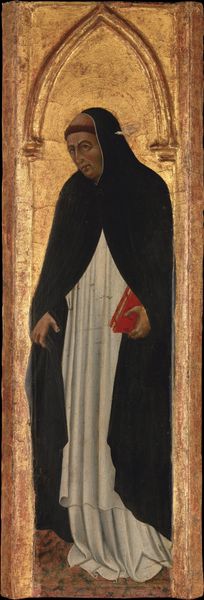
painting, oil-paint
#
portrait
#
painting
#
oil-paint
#
oil painting
#
history-painting
#
italian-renaissance
#
realism
Dimensions: overall: 149 x 56.5 cm (58 11/16 x 22 1/4 in.) framed: 171.5 x 80 x 8.6 cm (67 1/2 x 31 1/2 x 3 3/8 in.)
Copyright: National Gallery of Art: CC0 1.0
Vincenzo Foppa's Saint Anthony of Padua was created around 1500, using tempera on wood panel. Tempera is a technique in which pigment is bound with egg yolk, resulting in a matte, luminous surface. Here, it's meticulously applied to a wood panel. The choice of tempera, popular at the time, reflects the culture of laborious, specialized workshops. This wasn't just painting; it was a careful assembly of materials. The gilding, too, would have been a labor-intensive process, involving thin leaves of hammered gold, carefully burnished to a reflective sheen. Notice how the material influences the art's appearance. The tempera lends a certain flatness and clarity, while the gold imbues a sense of ethereal light. The use of these materials and techniques wasn't merely aesthetic; it signified a connection to skilled traditions and cultural values. Consider the work involved in its production, from panel preparation to pigment mixing and gilding. It underscores the value placed on skilled labor and the cultural context in which the artwork was made, challenging distinctions between art and craft.
Comments
No comments
Be the first to comment and join the conversation on the ultimate creative platform.

